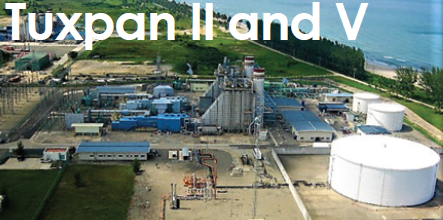
Recognized for its Best Practices in Safety and O&M
 Outage safety benefits from community outreach program
Outage safety benefits from community outreach program
People living in the communities near the Tuxpan F-class 2 × 1 combined cycles in Veracruz, Mexico, are a critical resource for the company. Management is concerned that local residents know what to do in an emergency and how to deal with safety-related issues encountered in their daily lives.
Plant owners Electricidad Aguila de Tuxpan and Electricidad Sol de Tuxpan sponsored safety training programs for area residents and for so-called “safety watchers” to assist plant personnel during outages. NAES Corp, the Tuxpan II and V operator, implemented the core safety training program for 80 residents. It was conducted by personnel with extensive experience in industrial safety; participants completing the program received a certificate.
Lessons were presented on what to do in an emergency, firefighting, CPR, types of fires and fire extinguishers, hazard and risk identification, differences between hazardous and urban wastes, etc.
Four groups of about 20 participants each were trained in one month. Goal was to increase knowledge of safety issues and to ensure a good relationship with stakeholders. The top performers in the community training program were invited to be part of a group of safety observers who would participate in the Tuxpan II fall outage by supporting NAES management in the supervision of contractor personnel.
Prior to the outage, the safety observers were trained to monitor specific issues. When the outage began, the safety watchers, supervised by the NAES HSSE team and training personnel, were divided into groups—first in day and night shifts, then in key areas.
Watchers had the task of giving safety recommendations for each unsafe act or condition detected, first addressing the worker to correct it, then the contractor´s safety supervisor to prevent it from happening again, and finally the NAES supervisor to integrate the incident into the safety statistics to improve or control it.
Excellent results were obtained with the safety watchers, said Plant Manager Jorge Gamel Esparza Cárdenas, PE. They helped the HSSE team prevent a lost-time incident during the 35-day outage. Here are the stats:
-
- Good practices cited, 115.
- Drug and alcohol tests, 6796. There were 10 positive results for alcohol, three for drugs.
- Unsafe acts and conditions reported, 233.
- Near misses, 6.
- Safety inspections conducted, 192.
- Minor first aid (health issues, headaches, flu, etc), 139.
- First aid (safety issues), 2.
- Medical treatments, 1.
- Lost-time incidents, 0.
- Incidents closed, 232.
- Average number of persons onsite during the daytime, about 360.
- Average number of persons onsite during at night, about 100.
Backwash plate-and-frame heat exchanger to boost performance
The OEM’s operating procedures provide NAES a safe way to isolate Tuxpan’s closed-cycle plate-and-frame heat exchangers for cleaning when heat-transfer surfaces are fouled and cooling duty cannot be maintained. However, these procedures require mechanical disassembly of the exchanger and washing each plate in turn because the backwash procedure provided was not effective.
The new procedure implemented by NAES allows washing of the heat exchanger without disassembly. Benefit of backwashing is that it extends the interval between manual cleanings, thereby reducing the cost of maintenance by about $30,000 annually. Procedure details are available in the 2Q/2018 issue of CCJ’s print edition, now in production.
Note that the wind and currents at the plant’s coastal location affect the amount of dirt carried by seawater into the heat exchangers. In a typical year, cleaning would be required 10 to 15 times. Today, backwashing is initiated only when the temperature of the closed-cycle cooling water rises to the point where cooling becomes inefficient.
Rigorous test regimen for valves assures reliable GT starts
“Tests of Safe Start with Gas Fuel in the Gas Turbines” are conducted to assure reliable starting and to avoid delays in commissioning by verifying both proper physical operation and logical response of the main valves involved in starting and operating the engines
Safe-start tests are conducted on valves such as the following:
-
- Fuel gas system.
- Main flow control.
- Fuel gas vent.
- Turbine fuel-gas shutoff for protection against gas-turbine overspeed; plus confirmation of overspeed trip reset.
- High-pressure bleed.
Testing has contributed to the detection and correction of abnormal variations in response of the valves to control logic, physical abnormalities of movement, and other situations in a timely manner for correction before turbine start. Dead times have been reduced, failed starts avoided, and turbine damage prevented.







